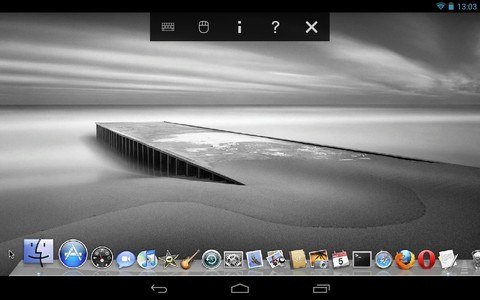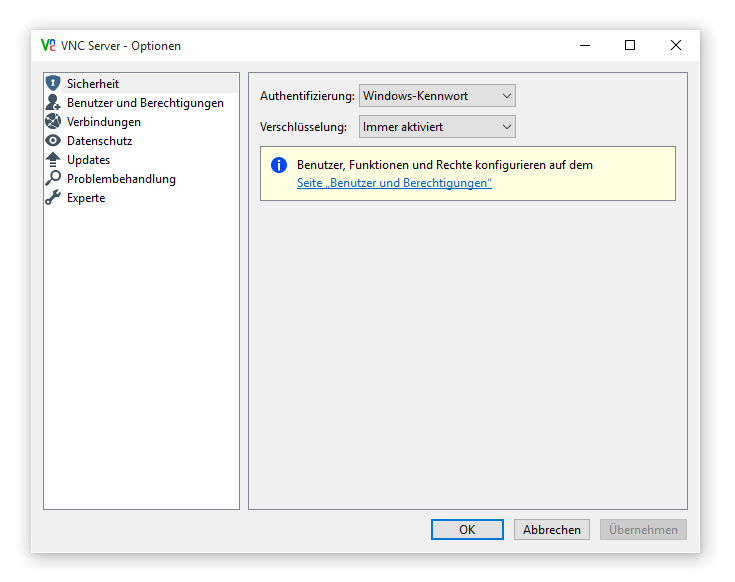

- #Vnc viewer login password
- #Vnc viewer login professional
- #Vnc viewer login download
- #Vnc viewer login mac
the lock screen is only dismissed the first time run, but never thereafter, vs. if I try the backgrounded version of the script, it has a onetime-only effect, i.e. $ while true do loginctl unlock-session 2 > /dev/null 2>&1 sleep 1 done & Related(?) question: If this is not cluttering the subject: note that the script I run is in the foreground, i.e.: $ while true do loginctl unlock-session 2 > /dev/null 2>&1 sleep 1 done without interference from any unintended keystrokes. To reject all other IP addresses, we add the following rule. Note that when I'm past the lock screen, at a bash shell, there doesn't seem to be any undesired keystrokes sent - i.e. Normally, VNC uses the port structure 5900+N and N represents the display number for the VNC service.
#Vnc viewer login password
Why is this necessary? Can someone explain what's going on with VNC viewer/server, or the lock screen on the Linux box, or any other related software, and why there appears a constant stream of Enter being sent through VNC specifically to the Linux login screen (or whatever else is going on to make the lock screen continually report "Authentication error" as though an incorrect password was supplied)? The script has the effect of dismissing the lock screen (within one second) whenever it appears - not exactly the best solution, but better than a perpetual lockout with an inability to enter a password. where that number, 2, is my "session-id". The workaround I've found to this situation is to log in directly to the Linux box and run this script: $ while true do loginctl unlock-session 2 > /dev/null 2>&1 sleep 1 done All the while, the "Authentication error" is perpetually displayed. With your VNC session now running, you can now connect to that hostname and.
#Vnc viewer login download
Moreover, if I stress-test here, by typing quickly, one or two of the "hidden character" symbols will appear before quickly disappearing again. Be sure you download the Java Viewer from that page, not the Windows version. More specifically, it appears as though some stream of Enter characters is being constantly streamed over VNC, triggering the login prompt to think the user is constantly entering a 0-length password: notice the "Authentication error" statement in the attached screenshot, revealing that the login screen thinks something has been entered. On the Linux box, when my session times out, and after the lock screen kicks in, if I subsequently try to unlock using the gui, over VNC, I seem to be permanently "locked out" without the ability to enter any text at the password prompt.

If you are unable to authenticate with domain credentials after following these steps, please contact Support.From my Windows box, I connect to my Linux box using VNC viewer/server. Note: you may need to qualify usernames with the domain name, for example \johndoe Connect with VNC Viewer and try authenticating with domain credentials.Create/edit /etc/vnc/config.d/common.custom and add the line:.Create /etc/pam.d/vncserver.custom with the below contents, depending on your operating common-session.To configure VNC Server to allow authentication with domain accounts, the below steps will enable a basic configuration to achieve this: When VNC Server is installed on Linux platforms, a suitable PAM library checking credentials against the local database store only is automatically referenced. This may mean no set up is required, especially under Windows and Mac. Certain admin groups are pre-registered, to enable connectivity out-of-the-box. Note: You can choose to remember the password so you don't have to enter it each time you connect. This authenticates you to VNC Server, the program running on the remote computer. The user account of each prospective VNC Viewer user must be registered with VNC Server. When you use VNC Viewer to connect to a remote computer for the first time, you are prompted to enter a username and password. *You can combine this authentication scheme with others in order to specify multi-factor authentication for VNC Server. Users can authenticate using already-familiar credentials, and don’t have to remember yet another password.System administrators often implement rules such as password complexity and ageing in enterprise environments to meet organisational security policies.
#Vnc viewer login mac
The system authentication scheme (labelled Windows password, Mac password or UNIX password) is both secure and convenient:

This means that VNC Viewer users can authenticate to VNC Server using the same credentials they normally use to log on to their user account on the VNC Server computer.
#Vnc viewer login professional
If you have a Professional or Enterprise subscription, then by default VNC Server is set to use system authentication.


 0 kommentar(er)
0 kommentar(er)
